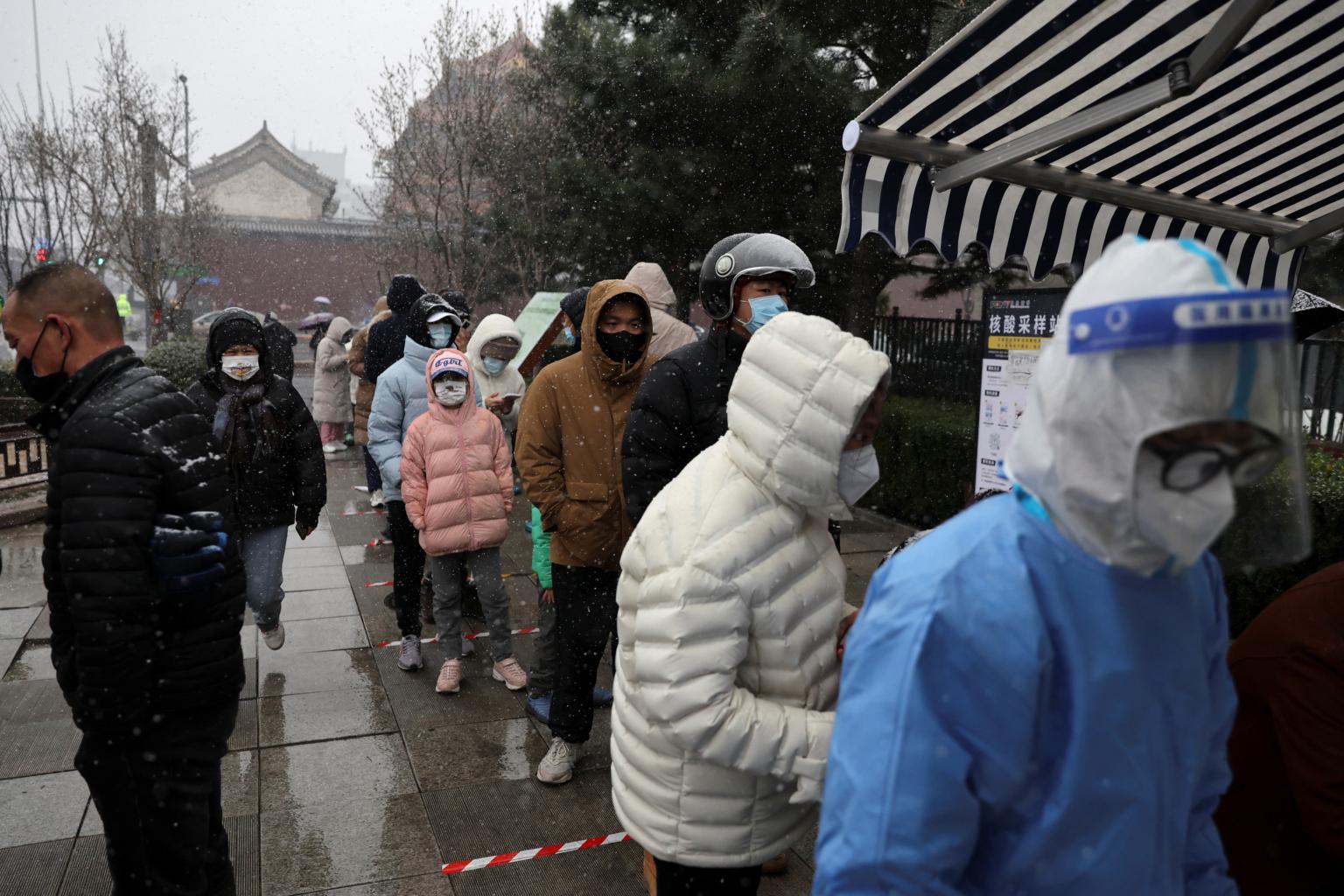China's current Covid-19 outbreak not going away soon: Health officials
Sign up now: Get ST's newsletters delivered to your inbox

China has recorded more than a thousand new cases daily since March 10.
PHOTO: REUTERS
Follow topic:
BEIJING - Chinese health officials on Friday (March 18) assessed that the current wave of Covid-19 infections, the worst since the pandemic started in 2020, will not be going away any time soon.
The country has recorded more than a thousand new cases daily since March 10. On Friday, the authorities reported 4,365 new cases, of which 1,904 were asymptomatic, up from the 2,627 cases the day before.
"We are facing a situation where there are many (clusters) of infection concurrently, and are dominated by the Omicron strain. You could say that the situation... is becoming increasingly severe and complicated," said National Health Commission (NHC) deputy director Wang Hesheng.
"In expert assessments, everyone believes that the current wave is still at a peak and will not end in the near future," he added.
The current outbreak has affected most of China's 31 provinces and regions, and is due to imported infections, the Chinese New Year travel season, as well as increasingly lax controls by enforcement officials who have become complacent, Mr Wang said.
He added that the highly infectious but elusive Omicron strain has proven a challenge because most patients do not exhibit symptoms, making it hard for medical workers to detect.
A day after President Xi Jinping said the country would stick to its "dynamic zero" Covid-19 strategy, officials reiterated on Friday that the policy will neither change any time soon, nor will they loosen weeks-long quarantine requirements for incoming travellers.
But NHC eased certain domestic restrictions on Tuesday, allowing for patients with mild symptoms to recover in centralised facilities instead of in a hospital. It also reduced the post-recovery quarantine period to a week, allowing patients to be at home instead of a quarantine facility.
Much of the new policies, Mr Wang said, will focus on minimising social and economic disruption while enforcing China's tried and tested playbook of "test, trace and isolate".
Yet several communities in Shanghai, which is facing its worst outbreak in two years, have said on Chinese social media that community lockdowns - during which mass testing was conducted - were arbitrarily extended beyond the initial 48 hours.
There were 260 new cases - both symptomatic and asymptomatic - reported in Shanghai on Friday.
Meanwhile, officials have urged citizens who have not been vaccinated to get jabs, and those eligible for booster shots to receive them.
China has a largely successful vaccination programme, with 87.85 per cent of the 1.4 billion population inoculated.
But a weak link in the programme has been the elderly population.
There are still 52 million people above the age of 60 who have not signed up for a Covid-19 vaccine, NHC officials said on Friday.
It was the first time the number has been revealed since vaccines were rolled out in late 2020.
While other countries started vaccination efforts focusing on the vulnerable and the elderly, China instead targeted essential workers such as healthcare professionals and those in the service industry, leaving senior citizens among the last holdouts.

<p>This photo taken on January 9, 2022 shows a resident (L) receiving a booster shot of the Sinovac Covid-19 coronavirus vaccine in Rongcheng, in China's eastern Shandong province. (Photo by AFP) / China OUT</p>
PHOTO: AFP
"The outbreak in Hong Kong is a particularly profound lesson for us, an example that if the vaccination rate for the elderly is low, the rate of severe cases and deaths will be high," said Mr Wang.
"We must not regret when it is too late," he added.

